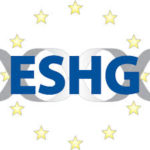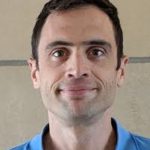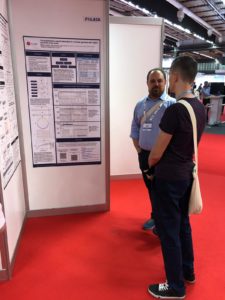 The annual meeting of the European Society of Human Genetics — held last month in the sleek Swedish Exhibition & Congress Center in Gothenburg, Sweden — was a terrific assembly of thousands of scientists who are together pushing the boundaries of what’s possible in genome research. The PacBio team particularly enjoyed seeing so many impressive ESHG presentations with scientific results from SMRT Sequencing pipelines featuring applications such as de novo whole genome sequencing, structural variant detection, the Iso-Seq method, and targeted sequencing.
The annual meeting of the European Society of Human Genetics — held last month in the sleek Swedish Exhibition & Congress Center in Gothenburg, Sweden — was a terrific assembly of thousands of scientists who are together pushing the boundaries of what’s possible in genome research. The PacBio team particularly enjoyed seeing so many impressive ESHG presentations with scientific results from SMRT Sequencing pipelines featuring applications such as de novo whole genome sequencing, structural variant detection, the Iso-Seq method, and targeted sequencing.

For example, in a plenary talk, the University of Southern California’s Mark Chaisson (@mjpchaisson) spoke about using long-read PacBio sequencing to analyze structural variation across human genomes. Representing the Human Genome Structural Variation Consortium, he talked about the growing number of available de novo sequenced human genomes, along with the need to characterize their complete universe of structural variants, many of which are missed in short-read assemblies.
Chaisson presented results from trio sequencing projects run by the consortium, showing that this approach allows for reliable and accurate phasing even of large structural variants, thanks to the use of long-read data. He noted that with the PacBio Sequel II System, it is now feasible to fully sequence a human genome in a single run. Chaisson concluded, “We are now in a realm where large scale human genome sequencing studies can be done using a long-read approach.”
 Other great presentations came from Jozef Gecz at the University of Adelaide, who spoke about a repeat expansion associated with a heritable form of epilepsy, and Michael Talkowski of the Broad Institute, who presented on structural variant discovery and the use of sequencing systems for genomic medicine. There were also several posters from PacBio users with exciting results, such as a Swedish reference genome, clinical sequencing of the SMA gene, and amplification-free sequencing of a repeat expansion that causes corneal dystrophy.
Other great presentations came from Jozef Gecz at the University of Adelaide, who spoke about a repeat expansion associated with a heritable form of epilepsy, and Michael Talkowski of the Broad Institute, who presented on structural variant discovery and the use of sequencing systems for genomic medicine. There were also several posters from PacBio users with exciting results, such as a Swedish reference genome, clinical sequencing of the SMA gene, and amplification-free sequencing of a repeat expansion that causes corneal dystrophy.
Our own team presented posters at ESHG as well. Billy Rowell shared “Comprehensive Variant Detection in a Human Genome with Highly Accurate Long Reads” while Jenny Ekholm presented “Sequencing the Previously Unsequenceable Using Amplification-free Targeted Enrichment Powered by CRISPR/Cas9.”
We’d like to thank all of the scientists who checked out our posters or stopped by the PacBio booth to learn more about SMRT Sequencing applications and the new Sequel II System. We appreciate your time and interest!
August 15, 2019 | Events + conferences